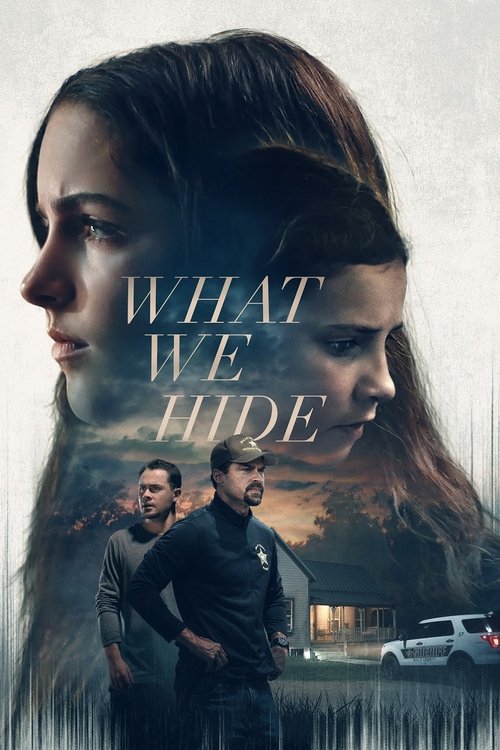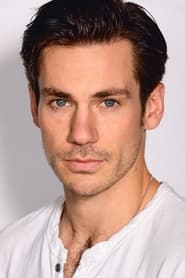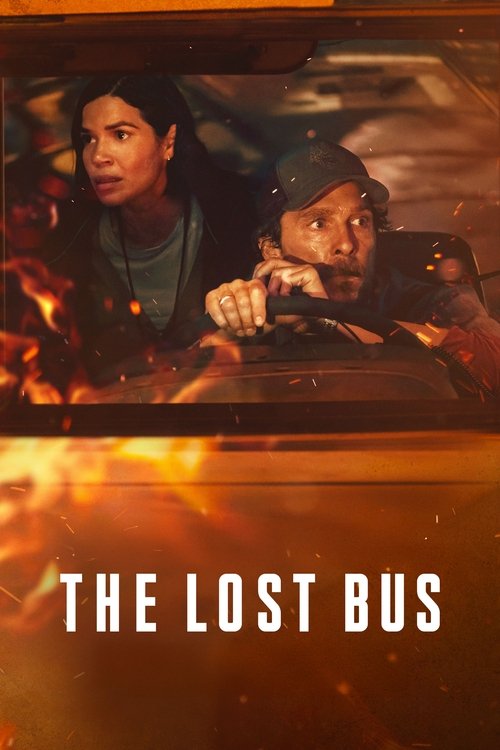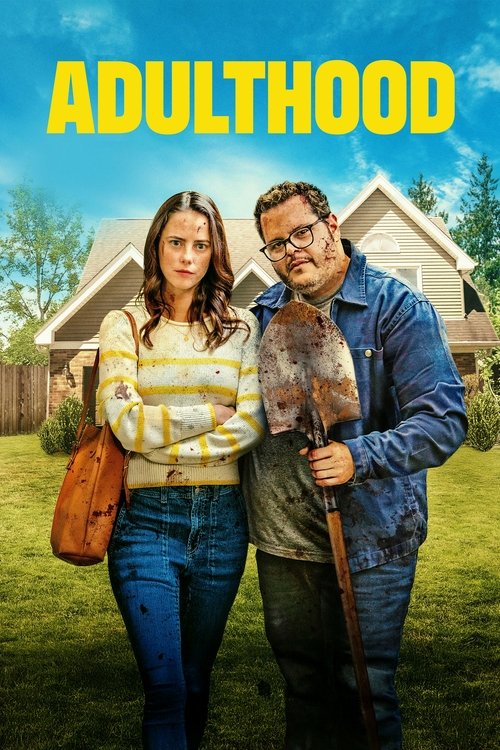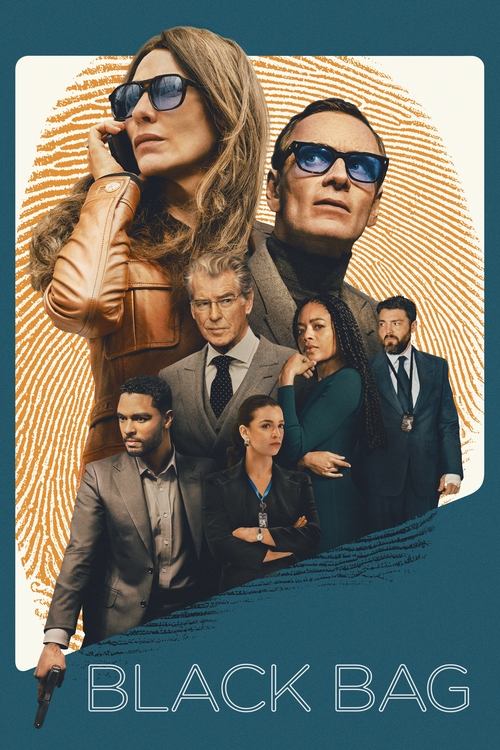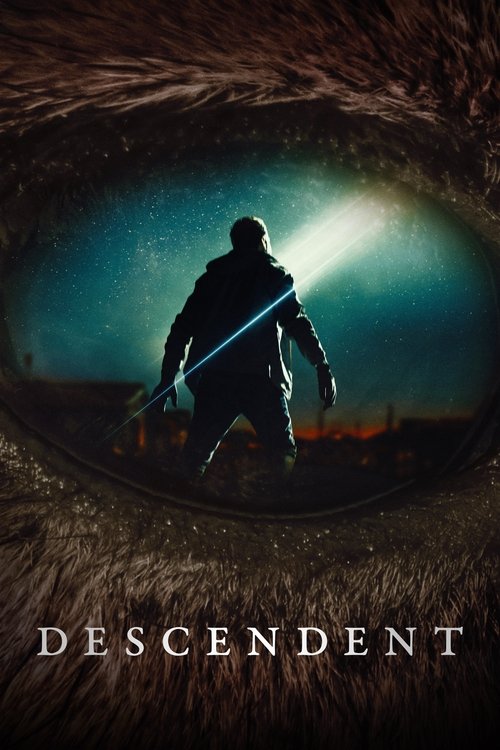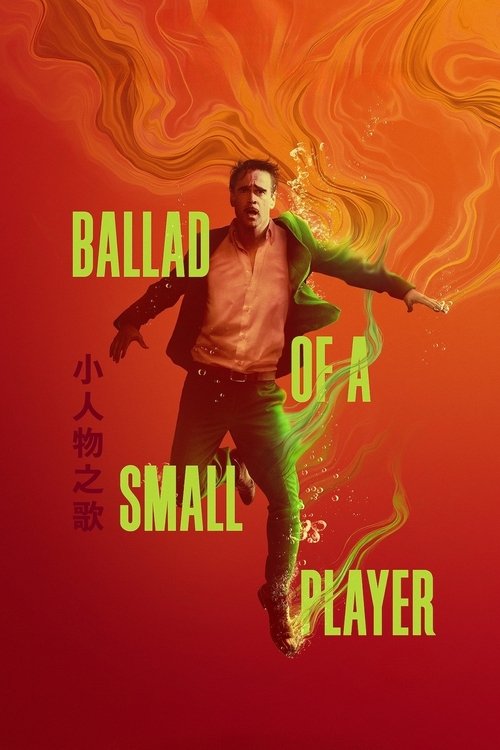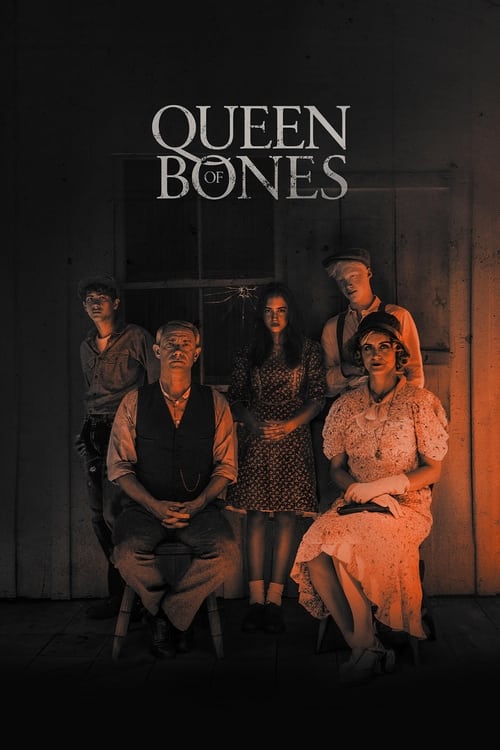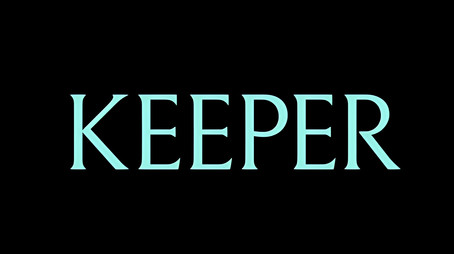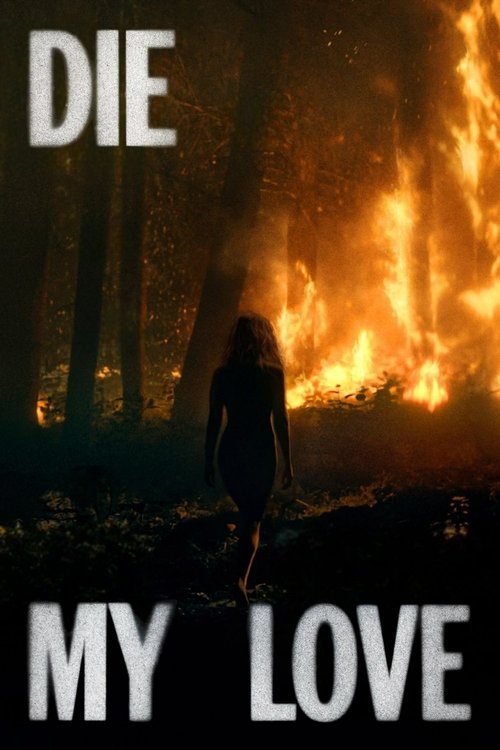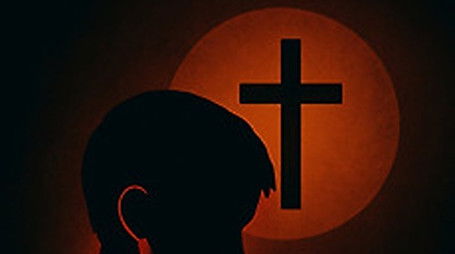
Ask Your Own Question
What is the plot?
The story opens with the sudden death of the family patriarch, whose body is carried from the family apartment and taken for examination. The coroners perform an autopsy and discover human tissue and bones in the man's stomach, a finding that triggers a criminal inquiry. Two police detectives assigned to the case, Tito and Owen, begin piecing together leads in the neighborhood, following the autopsy report to a modest multi-story building where the deceased family lives.
The household consists of the widow Patricia and her three children: Julián, the elder son; Alfredo, the younger son; and Sabina, the daughter. The family keeps to themselves, tending to domestic routines that conceal a secret: they kill and eat other people as part of a held ritual. After the autopsy reveals human remains, Detective Tito questions neighbors and delivers warrants, while Detective Owen follows up on suspicious purchases and missing persons reports connected to the area around the family's building.
Inside the apartment the family reacts to the patriarch's death and the mounting police interest. Patricia organizes burial and domestic tasks, maintaining strict authority over Julián, Alfredo, and Sabina. Julián accepts his role as the family's primary provider but grief unsettles their order. Alfredo, resentful and desperate to prove himself as the new head, presses Julián to let him take charge of procuring the next victim for the family's ceremony. Alfredo moves fast. He tracks down a young man he believes will serve as prey: a teenage boy from his social circle who identifies as gay. Alfredo lures the teenager back to the apartment one night with promises and deception.
In the apartment, Suspicions lead Sabina and Patricia to prepare another man to be consumed in the family's ritual while Alfredo waits on the return of the teenager he abducted. The teenage captive struggles during his confinement and manages to escape the flat. He runs into the street and shouts for help at neighbors; he reaches a phone and calls the police, reporting an attack and naming the building. The boy's flight sets a rapid chain of events in motion.
Detective Tito receives the frantic report and rushes to the scene. He corners Julián and Alfredo in the stairwell while other officers arrive at the building. Confusion and panic erupt in the cramped hallways as uniformed officers sweep the site. A squad car driver, seeing a figure in the stairwell and misinterpreting the situation in the heat of the moment, fires his weapon. The bullet strikes Detective Tito and he collapses; a police officer from the responding unit kills him with a gunshot, believing he is confronting a threat in the melee. Tito dies there in the stairwell, his body pooling on the concrete as confused shouts echo in the corridor.
Meanwhile Detective Owen pushes up to the family's apartment, unannounced and intent on interrogating Patricia and her children. He opens the door and confronts them inside the living room, where furniture and cloths are smeared with signs of the household's grim routines. Patricia and Sabina close ranks. They attack Owen together. They overpower him and, in the apartment's cramped space, they murder him. Patricia administers the fatal blows while Sabina assists; they end his life and begin concealing his body within the rooms they have set aside for rituals.
The homicide by the family escalates the situation into an armed siege. As word spreads, more police units arrive and cordon off the block. Officers enter the building and force their way into the apartment where Patricia, Julián, Alfredo and Sabina are gathered with the new captive they had been preparing. The family attempts to proceed with their ritual despite the presence of law enforcement. Julián grabs a handgun from a drawer and fires at the officers who breach the doorway, shooting two on-duty policemen. Those officers collapse in the living room, wounded, and the gunfire provokes a full tactical response.
Police surround the second-floor flat and secure the stairwell, trapping Julián, Alfredo, Sabina, and Patricia on the upper level. Shots are exchanged across the threshold as the family barricades themselves inside. In the tense hours that follow, the mother speaks with cold clarity: one family member must survive the blood rites, she says, insisting that the ritual must not die with them. She issues an ultimatum that one of her children remain alive to carry on the family's practice. Alfredo resists abandonment. He refuses to flee the flat, stating he will not leave his siblings or the ceremonial requirements behind.
Patricia reacts to Alfredo's refusal by making a choice of her own. She moves away from the barricade, climbs through a window and traverses the building's rooftops under cover of dusk and shadow. She abandons Julián, Alfredo and Sabina to the standoff below, leaving them trapped on the second floor as police tighten their perimeter. From the rooftop she moves across adjacent buildings and disappears into the neighborhood, intent on survival rather than sacrifice.
With Patricia gone, the remaining trio face a stalemate. Alfredo, desperate and unhinged by events, turns on Sabina. In a sudden burst of predatory violence he lunges at his sister, sinking his teeth into her shoulder and neck and tearing flesh as if to consume her. He bites repeatedly, ripping skin and causing brutal wounds. Blood spills across Sabina's shirt and the room fills with the sound of their struggle.
Julián recoils and then reacts with lethal finality. He raises his handgun and fires a single shot point-blank into Alfredo's head, the bullet striking and shattering his skull. Alfredo slumps to the floor, dead where he falls, his body still drenched in Sabina's blood. Julián stands over his brother's corpse for a moment, chest heaving from the adrenaline, then steps into the doorway and draws fire once more at the officers outside. Police return the gunfire with precision. Several bullets hit Julián and he collapses on the landing just inside the apartment; uniformed officers fire the shots that kill him, shooting him dead on the floor where he falls.
In the aftermath of the exchange the police clear the room and find Sabina alive but severely wounded from Alfredo's biting. The wounds on her arms and neck appear at first glance to mark her as a victim rather than a perpetrator. Detective units and medics treat her as a survivor, placing her into an ambulance and transporting her to the hospital. Sabina receives emergency care for the lacerations and blood loss; surgeons stitch her wounds and nurses monitor her through the night. The detectives catalog the scene: deceased officers, the bodies of Julián and Alfredo, and the empty tiles, fabrics, and implements of the household's grisly rituals scattered about the flat.
Patricia's fate unfolds elsewhere. During the turmoil of the siege and the subsequent investigation the prostitute friends of the young man whom Patricia murdered--women from the street who had connections to the girl's life--carry out their own search. They locate Patricia hiding in a small neighborhood playground, crouched under swings and behind a rusting slide, her clothes dirtied and her face drawn. The women assault her in retaliation. They beat Patricia with their fists and wooden implements in a flurry of brutal strikes. Their anger is unchecked; they pulverize her until she stops moving. Patricia dies in the playground, her body left amid the mulch and metal of the children's play equipment.
At the hospital Sabina recovers visibility and receives questioning from detectives who take statements from medical staff and review the evidence gathered at the apartment. Because of the bite marks and the way she is found--bleeding, restrained and with puncture wounds--police classify her as a victim of a violent assault. She is admitted with an apparent status of injured survivor rather than accomplice. The detectives focus on the deaths and the motives, cataloguing each corpse and blasting the building for forensic evidence; their initial reports frame the event as a failed attack that left several dead.
The next morning Sabina is restless in her hospital bed. She slips free of her restraints and the attention of a nurse at the ward. She walks through the quiet corridors, past the reception desk and out into the open air. She moves through the market district adjacent to the hospital, blending into the crowd of early shoppers. Outside a stall where a man stacks fruit she pauses, studies him intently, and then fixes him with a slow, uncanny smile. The expression on her face is hard and almost predatory. She watches the man as he turns to his work, the smile lingering on her lips.
Her gaze and her smile imply that, despite the official record of her as a wounded survivor, she will not abandon the practices that defined her family. Sabina steps away from the market stall and melts into the crush of people on the street, leaving the hospital behind. The film ends with that last image: Sabina moving off through the crowd, the cruel smile still on her face, the future of the family's ritual activities left open as she disappears into the city.
What is the ending?
Short Narrative Ending: In "What We Hide," two sisters, Spider and Jessie, face a desperate situation after their mother's fatal overdose. They hide her body to avoid being separated by the foster system. As they navigate this secret, they must confront the consequences of their actions and the reality of their situation. The film culminates with the sisters facing the truth and the potential consequences of their decisions.
Expanded Narrative Ending:
The ending of "What We Hide" unfolds with Spider and Jessie struggling to maintain their secret. The local sheriff, Ben Jeffries, played by Jesse Williams, becomes increasingly suspicious, and the sisters' lives become more complicated. The presence of their mother's drug dealer, Reece, played by Dacre Montgomery, adds to the tension.
As the story progresses, Spider's anger and grief over her mother's death intensify. She is torn between her desire to protect Jessie and the guilt of hiding the truth. Meanwhile, Jessie remains innocent and trusting, relying on Spider for guidance and support.
The climax of the film occurs when the sisters' secret is on the verge of being exposed. They must decide how far they are willing to go to keep their family together. The tension builds as they face the possibility of being discovered and separated.
In the final scenes, the sisters are forced to confront the reality of their situation. The film concludes with a poignant moment of truth, where Spider and Jessie must accept the consequences of their actions. The fate of the sisters remains uncertain, leaving the audience to ponder the future they will face.
Throughout the ending, the film highlights the themes of love, survival, and the resilience of the sisters. Spider's character evolves as she grapples with her emotions and the weight of responsibility for her sister. Jessie's innocence and trust serve as a contrast to Spider's turmoil, emphasizing the bond between them.
Ultimately, the film ends on a note that underscores the complexity of the sisters' situation and the difficult choices they must make to protect each other. The conclusion is emotionally charged, focusing on the sisters' relationship and their struggle to maintain hope in the face of adversity.
Is there a post-credit scene?
The movie What We Hide produced in 2025 does not have a post-credits scene. After the film ends and the credits begin, there are no additional clips or hidden scenes shown. The story is presented as a complete narrative without extra material following the credits.
What motivates Spider and Jessie to hide their mother's body after her overdose?
Spider and Jessie hide their mother's body because they fear that the foster care system will separate them if authorities discover their mother's death. Their primary motivation is to stay together as sisters despite the tragic circumstances.
How does the local sheriff, Ben Jeffries, factor into the sisters' secret?
Sheriff Ben Jeffries, played by Jesse Williams, is the local law enforcement figure who begins asking questions about the mother's death. His investigation creates tension and uncertainty for Spider and Jessie as they try to keep their secret hidden.
What role does the mother's drug dealer, Reece, play in the story?
Reece, portrayed by Dacre Montgomery, is the mother's drug dealer who lurks around after her death. His presence adds a layer of threat and complexity to the sisters' situation, increasing the danger that their secret might be uncovered.
How do the sisters' personalities and relationship evolve throughout the film?
Spider initially presents as a disaffected, tough teenager, but through interactions with her sister Jessie and a new crush, Cody, she reveals a more vulnerable and growing side. Jessie is earnest and committed to their cause, embodying innocence and determination. Their relationship is central to the film, with both leaning on each other to navigate their difficult circumstances and the encroaching external threats.
Who is Cody and what is his significance in the story?
Cody, played by Forrest Goodluck, is a new crush for Spider who helps awaken a different side of her beyond her tough exterior. His character contributes to Spider's emotional growth and adds a dimension of hope and connection amidst the sisters' struggle to keep their secret.
Is this family friendly?
The movie "What We Hide" produced in 2025 may not be suitable for all ages due to its mature themes and potentially distressing content. Here are some aspects that might be objectionable or upsetting for children or sensitive viewers:
-
Drug Abuse and Overdose: The film deals with the death of a mother due to a drug overdose, which is a serious and potentially disturbing topic for young audiences.
-
Fear of Separation: The sisters fear being separated by the foster system, which can evoke strong emotional responses, especially in children who may worry about similar situations.
-
Emotional Tension and Grief: The movie explores intense emotional scenes, including grief and desperation, as the sisters navigate their situation.
-
Mature Themes: The plot involves lying and hiding a significant secret, which can lead to tense and emotionally charged moments.
-
Potential for Violence or Threats: There are mentions of suspicious characters and potential threats, which might create anxiety for sensitive viewers.
Overall, while the film is praised for its acting and emotional depth, its themes and content may not be suitable for younger or more sensitive audiences.

